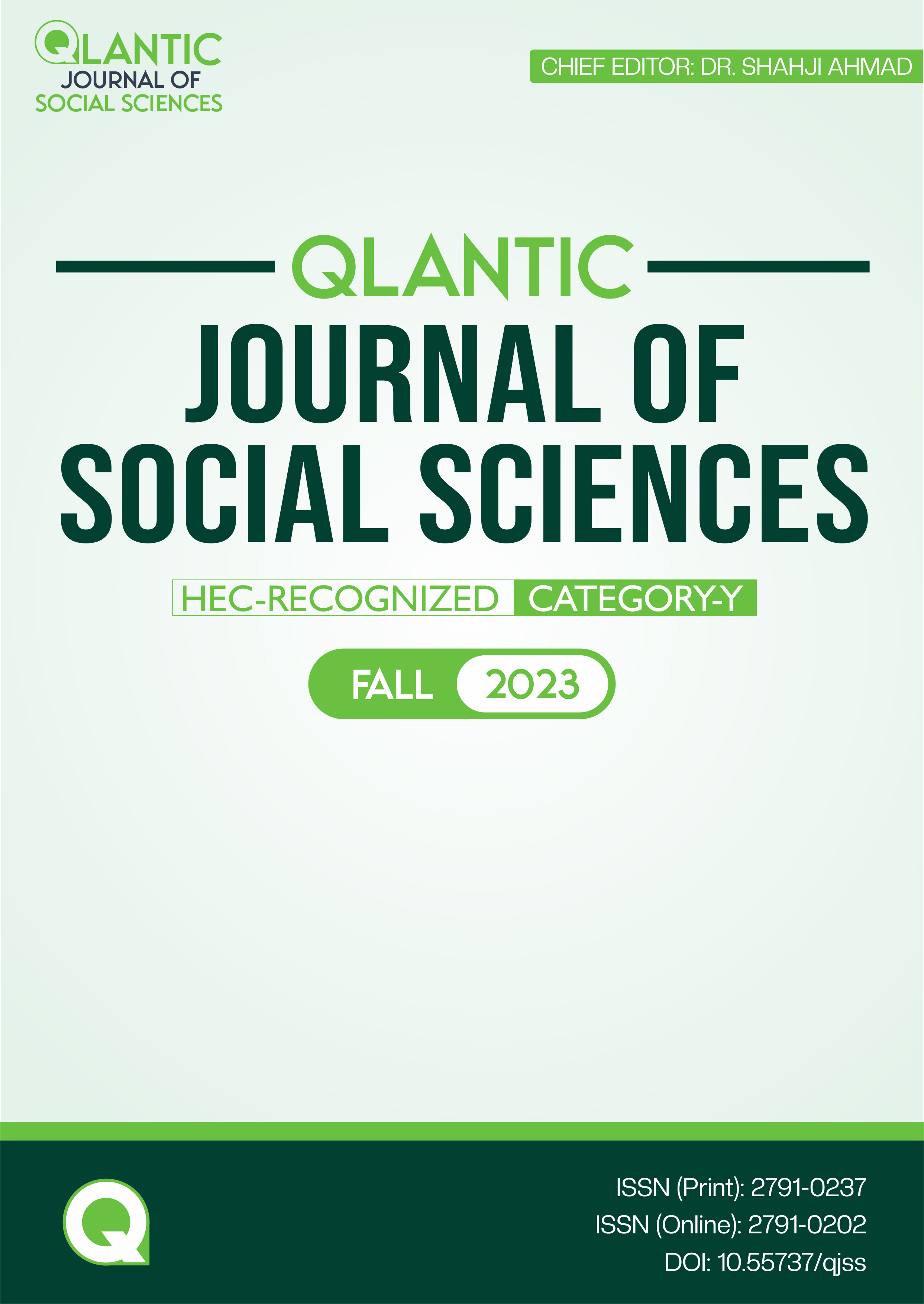Understanding Media Functions Through Belief into Action Scale: A Case of Islamabad-based Pakistani News Reporters
DOI:
https://doi.org/10.55737/qjss.718470488Keywords:
Religious Beliefs, News Reporters, Media Functions, Professional Roles, Pakistani SocietyAbstract
The current research focused on exploring the inclination of Islamabad-based news reporters to get influenced by their religious beliefs while performing different media functions of civic, service, loyal-facilitator, disseminator-interventionist, watchdog, and infotainment as part of their professional roles. The study adopted the “Belief into Action Scale to deploy a quantitative cross-sectional survey and collected data from 310 news reporters serving in various print and electronic media organizations in the Federal Capital. The findings of the study revealed that the influence of religious beliefs varied between gender groups, with male news reporters being more influenced than their female counterparts. Similarly, older news reporters were more influenced by religious beliefs as compared to younger colleagues. Moreover, this influence also varied among the news reporters performing different media functions, with Loyal-Facilitators, Disseminator-Interventionists, and the ones who performed service and civic roles scoring higher on the variable of Religious Beliefs and Practices.
References
Abbas, J., Aman, J., Nurunnabi, M., & Bano, S. (2019). The Impact of Social Media on Learning Behavior for Sustainable Education : Evidence of Students from Selected Universities in Pakistan. Sustainability, 11(1683), 1–23. https://doi.org/10.3390/su11061683
Abbas, S., Saeed, S., & Abbas, S. (2018). Impact of Religion on Quality of Life among Young Female Students in Pakistan: A Case Study of Sialkot. Orient Research Journal of Social Sciences, 3(2), 291–303. https://gcwus.edu.pk/wp-content/uploads/10.-Impact-of-Religion-on-Quality-of-Life-among-Young-Female-Students-in-Pakistan.pdf
Abdulla, M. R. (2018). Culture, Religion, and Freedom of Religion or BeliefE. The Review of Faith & International Affairs 16(4), 102–115. https://doi.org/10.1080/15570274.2018.1535033
Agorastos, A., Demiralay, C., & Huber, C. G. (2014). Influence of religious aspects and personal beliefs on psychological behavior : focus on anxiety disorders. Psychology Research and Behavior Management, 7, 93–101. https://doi.org/10.2147/prbm.s43666
Dhiman, B. (2023). Enhancing Positivity in Mass Media for Nation Building : A Critical Review. https://doi.org/10.20944/preprints202306.1320.v1
Eshelman, K. (2013). Faith, Work, and Journalism. Public Square. https://tifwe.org/faith-work-and-journalism/
Galston, W. A. (2013). The common good: Theoretical content, practical utility. Daedalus, 142(2), 9-14. https://doi.org/10.1162/daed_a_00199
Keeping the Faith. (2020). In Columbia Journalism Review. https://www.cjr.org/special_report/religion-journalism-roundtable.php
Koenig, H. G., Wang, Z., Zaben, F. A. l., & Adi, A. (2015). Measure of Religious Involvement. Reliogions, 6, 1006–1016. https://doi.org/10.3390/rel6031006
Mellado, C., & Lagos, C. (2014). Professional Roles in News Content : Analyzing Journalistic Performance in the Chilean National Press. International Journal of Communication, 8, 2090–2112. https://doi.org/10.1080/1461670x.2014.922276
Mezzera, M., & Sial, S. (2010). Media and Governance in Pakistan : A controversial yet essential relationship. https://www.clingendael.org/sites/default/files/pdfs/20101109_CRU_publicatie_mmezzera.pdf
Mineo, L., & Moore, D. (2016). When Journalism Meets Religion. The Harvard Gazette. https://news.harvard.edu/gazette/story/2016/12/religious-lit-symposium/
Nielsen, N. (1996). Religion and The Global Media: Imporving a Strained Relationship. The Fletcher Forum of World Affairs, 20(1), 63–74.
Nikunen, K. (2019). Media, Emotions and Affect. In J. Curran & D. Hesmondhalgh (Eds.), Media and Society (6th ed., p. 323). Bloomsbury Publishing Inc.
Picard, R. G. (2000). Measuring Quality by Journalistic Activity. In R. G. P. Kirjapaino (Ed.), Measuring Media Content, Quality, and Diversity: Approaches and Issues in Content Research (97–101). https://www.robertpicard.net/files/MeasuringQuality.pdf
Salman, A., Mustaffa, N., Mohd Salleh, M. A., & Ali, M. N. (2016). Social media and agenda setting: Implications on political agenda. Jurnal Komunikasi, Malaysian Journal of Communication, 32(1), 401-414. https://doi.org/10.17576/jkmjc-2016-3201-19
Siddique, R. M. S., & Rahman, B. H. (2017). Watchdog Role of Media : An Exploratory Study of the Editorials of the Leading Pakistani English and Urdu Language Dailies. Journal of Media Studies, 32(2), 1–35. http://journals.pu.edu.pk/journals/index.php/jms/article/view/1941
Singh, D. (2022). The causes of police corruption and working towards prevention in conflict-stricken states. Laws, 11(5), 69. https://doi.org/10.3390/laws11050069
Wilding, D., Fray, P., Molitorisz, S., & McKewon, E. (2018). The Impact of Digital Platforms on News and Journalistic Content. https://kq.freepressunlimited.org/evidence/the-impact-of-digital-platforms-on-news-and-journalistic-content/




